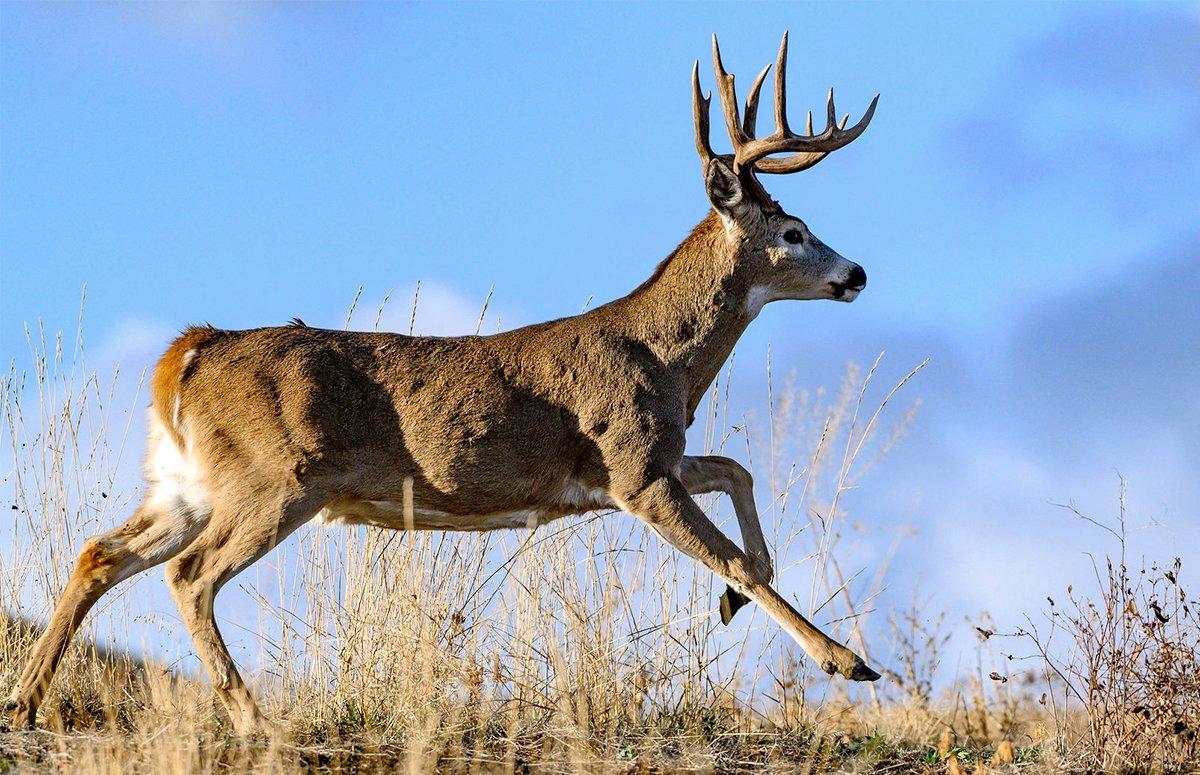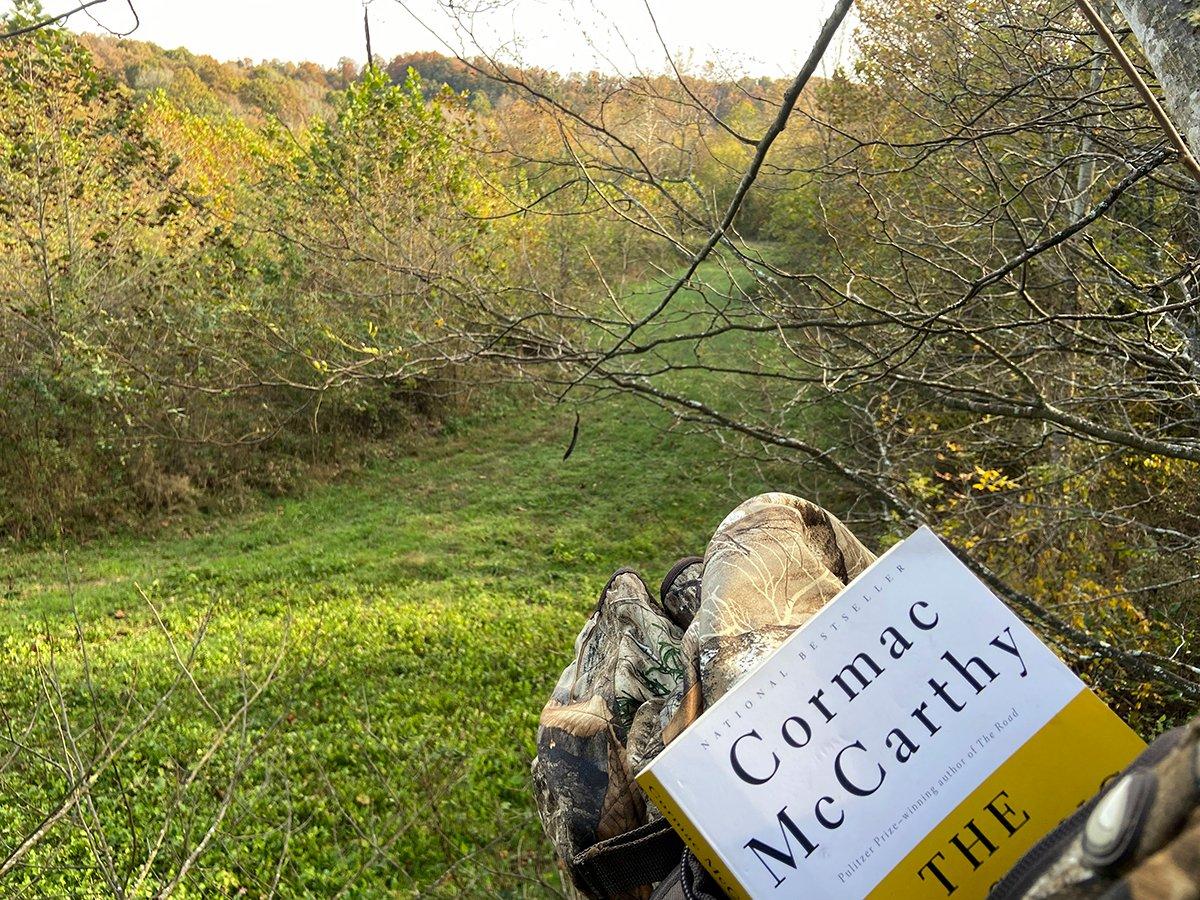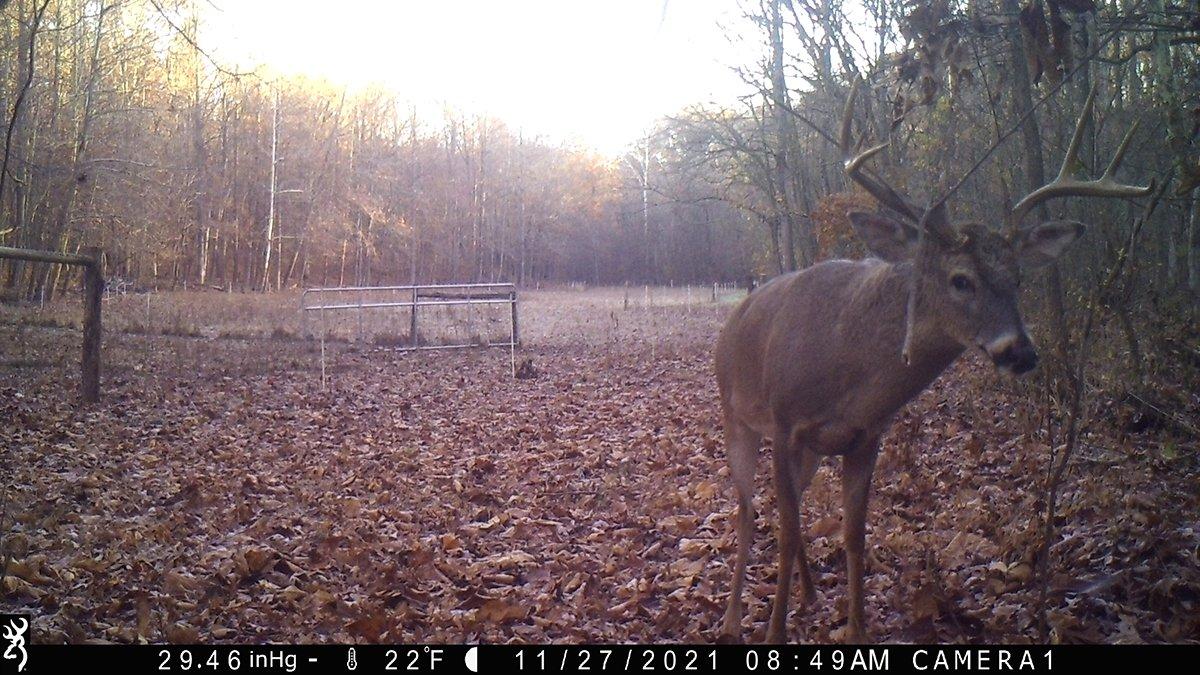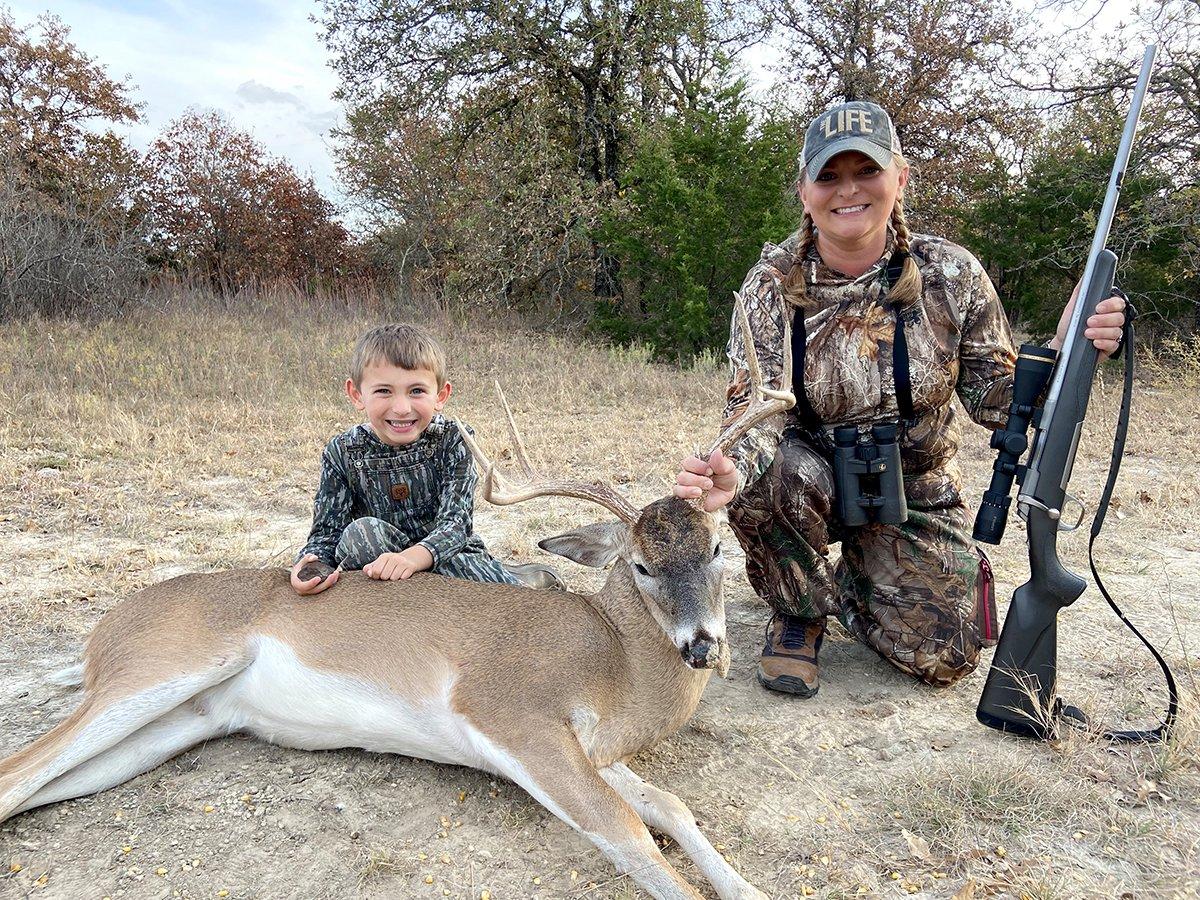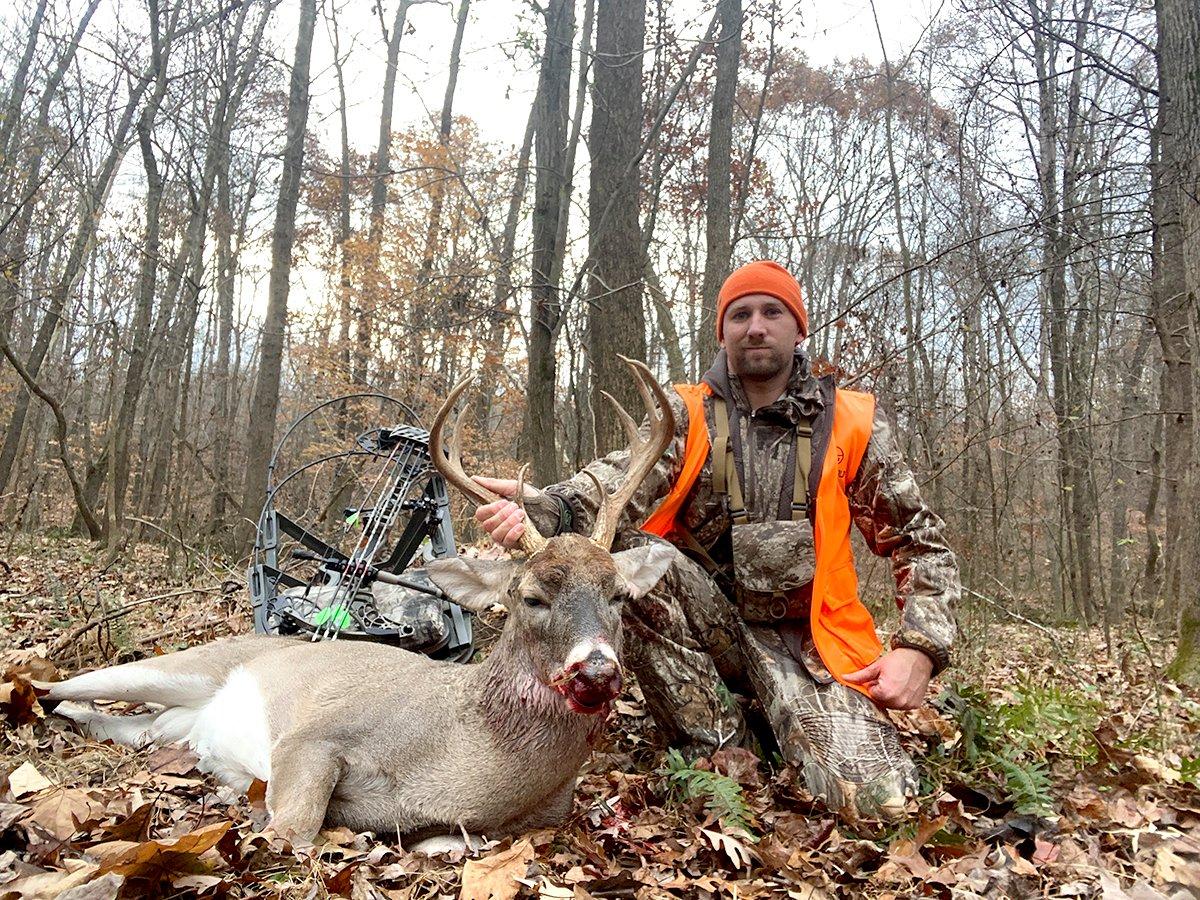Deer bloggers Mike Hanback and Will Brantley reflect on a full fall of chasing whitetails across the country. Check out the podcast, too
Hanback's Lessons
Crafty and insanely unpredictable, a whitetail buck that has roamed this Earth for 4 or 5 years is the ultimate teacher. No matter how long you've been hunting, no matter good you think you are, no matter how much you think you know, a big deer will throw you curves that will both frustrate and humble you. I've been at this game for 40 years, and nothing a mature buck does surprises me anymore. Nothing. I learn new things every season, and so should you. — M.H.
1. Stop Complaining and Live with the Heat
During early bow and black-powder seasons in Virginia last October, temperatures hovered in the 70s and even 80s some days. In mid-November, I traveled to north-central Saskatchewan, where average temps should be in the teens and low 20s that time of year. Afternoons in the bush were a balmy 50 degrees. One sunny day in Oklahoma in late November, it was a record 88 degrees! Long story short, I hunted hard for two months in all these places and didn't see a mature buck.
I'm sure you can relate. Warm to crazy hot weather is here to stay from September into November in most regions of whitetail country. Stop complaining about it and go hunting. Lots of mature bucks, and some 170- to 200-plus giants, are killed on sweltering days by hunters who stay positive, grind it out and make their luck.
2. Mature Bucks are More Nocturnal Than Ever
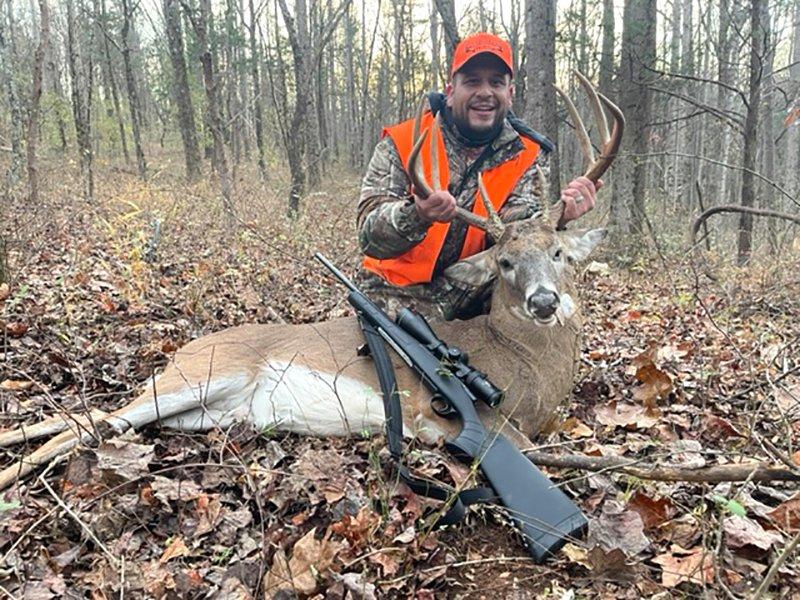
We saw exactly the same thing on our north-central Pennsylvania farm, said deer biologist Kip Adams in an email. And I know of many folks in the eastern half of the U.S experienced the same thing. I firmly believe it had to do with the unseasonably warm temperatures. At least on our farm, mature bucks, and most does for that matter, were not hitting our traditional November/December food plots of corn, brassicas, and winter cereal grains until after dark. We take extreme care to not pressure our best food plots, but even those were pretty empty during shooting hours last fall.
I do not expect last fall to be a one off. With warm weather likely to dominate deer seasons to come, you'll have to deal with bucks that are more nocturnal than ever. You'll need a break to score, read on.
(Don't Miss: Hunt the Deep South's January Deer Rut)
3. Capitalize on an Immediate Weather Change
A good cold front is never a bad thing during deer season, my colleague Will Brantley writes in this post. I agree, and take that a step further.
After a week or two of warm days and nights, a shot of cool, fresh air often kicks bucks into moving but sometimes just for the first few hours. If you're not out there in your best stand the minute the weather turns and drops the temperature 10 or 20 degrees, you might miss out.
Last November Mark Velez, a Purple Heart veteran of the Afghanistan war, hunted with us in Virginia. For four days the temperature hovered in the upper 60s; Mark saw 30-some does and two spindly bucks.
There are many skeptics, both biologists and skilled hunters who pooh-pooh the moon and believe it has absolutely no effect on deer movement and the rut. Not me.
At 3 p.m. on the fifth afternoon, I dropped Mark at his stand just as a dry front rolled in from the northwest, cooled the temperature 20 degrees, and erased the stagnant humidity from the air. Thirty minutes later I got the text, Big Deer Down. The first deer to come by that afternoon was a beautiful 140-class 8-pointer and Mark smoked him.
Watch the hourly on your favorite weather app and be in position the minute the weather changes and crisp air moves in because the next few hours can be your best chance to get your buck.
4. Yes, There's Something to the Moon and the Rut
In 2021, there was an early rutting full moon on October 17. In my annual moon-rut predictions I wrote: October 20 through the waning gibbous moon on the 27th wouldn't be a bad week to try (last) season. The moon will be bright and a good number of adult does should pop into heat, kicking bucks into a frenzied if brief seeking mode. If you can push your off days into the last-quarter moon through October 31, do it.
Recently I got an email from a bowhunter called Jimmy Belmore, who wrote, Mike, you nailed it here in northern Pennsylvania. I took your advice and hunted the last week of October. Fresh scrapes everywhere, a couple of buck fights and lots of chasing. Shot a 160-inch non-typical 12-pointer. You made a moon believer out of me.
There are many skeptics, both biologists and skilled hunters who pooh-pooh the moon and believe it has absolutely no effect on deer movement and the rut. Not me. For the last four decades, I haven't missed a season where I didn't hunt around and during the rutting full moon in late October or November. There is absolutely no doubt in my mind that during the full moon and in the three days before and after it, I have seen increased buck movement, both on camera at night and, better, from a stand during daylight hours.
In 2022, the rutting moon will wax full on November 8, which is about as good as it gets for the bowhunter. The bright moon will expose the late pre-rut and begin to kick does into estrus. Take off and hunt this week and I predict you will see fair to extraordinary buck movement, especially if we get a few days of cool weather.
(Don't Miss: 20 Winter Deer Hunting Tips for the Last Week of Season)
5. I Agree with Brantley, Later is Better
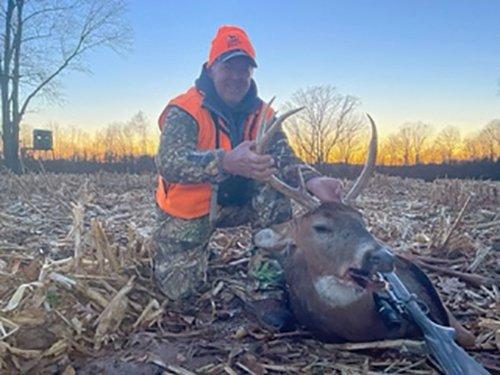
Last December 8, in a box blind in southern Indiana, the cool air that blew through the windows felt good. At 3:45, does and little bucks started piling out in the cut corn. At 4:30 I couldn't believe my eyes. A tank of a buck with a weird rack — four points on one side and a giant blade on the left — followed a doe out of the timber and approached my stand, a good hour before dark! My muzzleloader roared and the beast went down. He weighed 260 if he weighed a pound.
My final lesson: Hunt hard through the warm, tough days of bow season … keep your head up if the bucks go nocturnal and elusive during the rut … stay positive and keep grinding into December. When conditions finally turn in your favor and you tag out, it's all the sweeter.
Brantley's Lessons
In early September, opening day of Kentucky's bow season, I was en route to drop a client off at a stand where a big 8-pointer was making a regular appearance. We were talking about the pre-season jitters, and how it's so easy to forget the little things on opening day, like the D-loop for your safety harness or the extra EZ Hanger for your pack. Man, I get just jacked when I see the first deer of a new season, my client said.
I hear you, I told him. In fact, I don't like to start buck hunting at all until I can shoot a doe and take the edge off a bit! Just don't do that at this spot, because that big 'un is coming in.
We laughed at my own advice being at odds with itself. But the words stung a bit because on the very next evening that client — who's plenty seasoned and has killed a bunch of good bucks — missed that big deer at 18 yards. Man, I just got fired up and rushed it! he said.
That takeaway is a free one. Never hurts to shoot a doe first. As long ago as that lesson was, the near five months in between went by fast. Bow season ended here about a week ago, and a lot happened in between. There were some high points this fall, and a couple really low ones, too. But as is the case in any good deer season, there was plenty to learn. — W.B.
1. Location is More Important Than Lure for Mock Scrapes
I made a bunch of mock scrapes this season, starting around October 20. Just about all of them produced a deer picture or two, but a few were especially productive, from Halloween clear through mid-December. We often hear of scrapes going cold during the peak breeding, and while bucks do indeed delay pawing at them for a few weeks in November, that doesn't mean they won't stop for a whiff of the licking branch. That licking branch is important; it needs to be good sized (the diameter of a pencil or better), green and springy, and at the right height. Shoulder-high on me seems to be about right, and the limb itself needs to be isolated, so as to be noticed. Beyond that, the fake scrape needs to be in a good spot. I didn't get much action with field-edge scrapes, for example, but those made in heavy travel corridors back in the timber — especially near creek crossings — saw action all season.
Scent is important, as I got far and away the most pictures within two days of making the scrapes, and another uptick in activity every time I freshened them. But it doesn't really matter what kind of scent you use, when. I tried doe estrus early, buck urine late, and once, because I had nothing else handy, I doused a mock scrape down with a spray bottle of elk pee. Bucks hit them all the same.
2. When a Buck Sees You in a Tree, It's Disastrous
We worry a lot about the wind and it's true; you don't want a buck to smell you. But a deer picking you out in the tree is worse. On Halloween evening I hunted a ladder stand on a favorite farm in Tennessee. That stand is set so that my back is to the main trail, and I'm facing a fairly wide creek. The idea is for the tree trunk to provide cover for me to turn and shoot deer coming down the trail.
Problem was, it was rainy that evening, and the buck I was hunting in that spot came down the edge of the creek, in front of me, as I was looking back over my shoulder at the trail. I didn't hear him until he broke a twig 25 yards away. I turned my head, we locked eyes, and he tore out of there. Later that evening, a group of does did the same thing and there was something in my gut — predatory instinct maybe? — that said, You've really screwed this spot up bad.
I was sure that ladder stand was setup perfectly when I'd hung the set, but I never got another photo of that buck. I ended up killing a different buck there in December — but I was in my climbing stand in a different tree, and the half dozen deer I saw that morning were positively wired around that ladder. You've got to hunt the wind, but man if they see you in the tree, it's game over for a long time. Count your losses and try a new plan.
(Don't Miss: Mother and Son Shoot Big Locked-Up Bucks)
3. There Are Only a Few Really Good Days All Fall
A good cold front is never a bad thing during deer season. But it's the absolute difference maker during the late early season — from mid-September to about the 10th of October, between when bucks shed their velvet and when they start scraping hard. I spent the first week of September guiding a hunt, and the second week chasing mule deer in Colorado. My first whitetail sit was the evening of September 22, timed with the first autumn cold front of the year. It felt good to have a sweatshirt on, I remember, and I arrowed a big doe, my first deer of the season, shortly after climbing into my stand. I saw 20 deer that afternoon.
Like running a trap line, location, not lure, is the most important part of setting a mock scrape.
That same front was productive elsewhere in the country. When it passed through Oklahoma the previous day, pro-staffer Jeff Danker shot this monster buck. We posted stories of two big bucks that fell the next day; Dan Infalt arrowed a Booner on public land in Wisconsin, and Tyler Jordan shot his biggest archery buck to date on Realtree Farms in Georgia. That front was special, and weather like that only comes along so often. Call in sick when you see such a forecast.
4. The Late Rut is Best
Everyone is excited for November, and this year, the first couple days following Halloween were indeed good (at least for me). But despite generally favorable weather, mid-November was painfully slow for many deer hunters I talked to in the Midwest and Mid-South. Our gun season opened Nov. 13, and it was cold and clear that day. I hunted with my 7-year-old son, almost daylight to dark, and we saw fewer deer than I ever remember seeing on the rifle opener. Earlier this week, Rack Reporter Josh Honeycutt posted the tale of Iowa hunter Zach Mixer, who hunted two full days (Nov. 11 and 12) without seeing a single deer. Mixer slept in on the third morning, got in his stand that evening and finally saw a deer at 2:40 in the afternoon. It happened to be a giant buck.
The takeaway is, deer can seem pretty scarce when they're locked down and breeding off in the thickets. But just as late spring is a good time to call up a lone gobbler, Thanksgiving through mid-December has proven to an especially productive time to run into a big buck. We hunted in North Texas over Thanksgiving, and the big bucks down there were cruising at all hours of the day (my wife, Michelle, shot a nice 8 the first afternoon). Back home, my trail cameras revealed the same thing on the same day. When I did return home, I arrowed a nice 8-pointer in Tennessee the morning of Dec. 1, and he was marching in to scent-check does. A couple weeks later — December 12 — we put a client in a climbing stand during the late muzzleloader season, and he bagged a stud of a 7-pointer that snuck down a scrape line shortly after sunrise.
Not long ago I'd have told you the first week of November is my favorite time to hunt and I probably still enjoy it most, if only for the ambiance of it all. But for pure productivity on the big ones, the late rut is better.
(Don't Miss: How to Can Deer Meat)
5. Don't Take it for Granted
I'd been hunting hard that first week of November, and I drove into town at midday on the fifth to get lunch and record a Rut Report edition of Realtree's Outpost Podcast. I parked on the hill at the city park in Dawson Springs, Kentucky, my home town, and spent an hour talking deer hunting with my buddies Miles Fedinec (the Southwest Region reporter) and Tim Kent (the Northeast Region reporter).
The next time I'd park in that spot would be December 15, when Michelle and I were there helping clean up debris after Dawson Springs was hit head-on by a giant tornado the night of Dec. 10. It was the eve of late muzzleloader season, and the storm claimed the lives of several people in our town and leveled 75% of the homes. In the weeks since, I've talked to many hunters there who were primed to hit the woods the next day, but lost everything overnight.
The point of that takeaway is mainly as a note to myself for next fall. I've been writing takeaways at the end of deer season for years, and I love to go back and check them the following year, just to brush up on lessons that might've been forgotten. It's like shooting an early season doe to knock off the jitters. That storm happened during deer season, and it put little worries — like getting busted by a buck or not seeing anything at all — into perspective. Even five months of deer hunting go by fast. Count your blessings every time you get to sit in the woods and then come home safe. It's never guaranteed. With any luck, I'm looking forward to sitting on that hill again next November, recording a podcast, and talking about the excitement of the rut once again.


